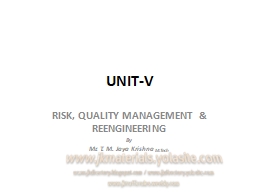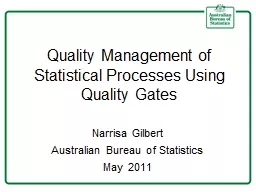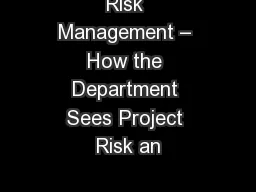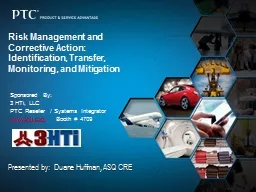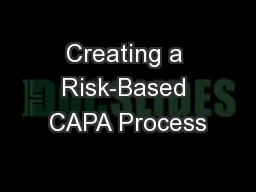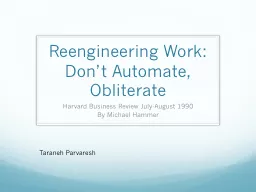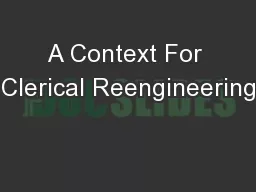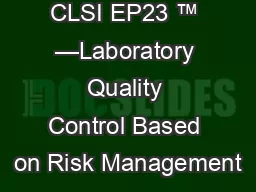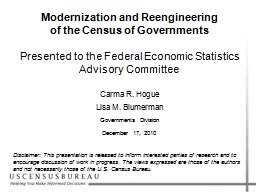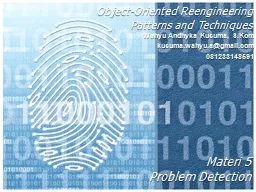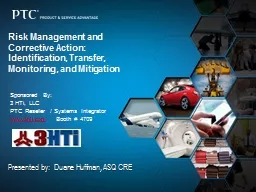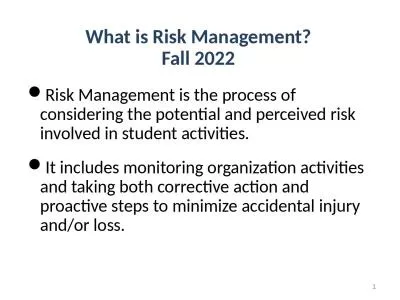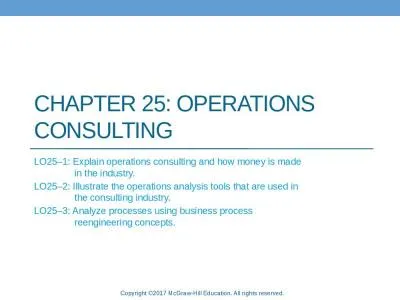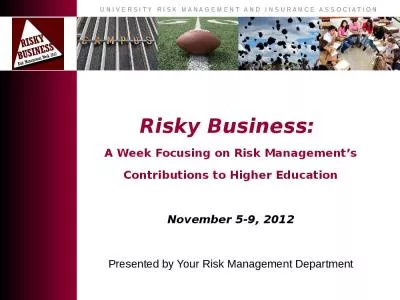PPT-UNIT-V RISK, QUALITY MANAGEMENT & REENGINEERING
Author : megan | Published Date : 2023-06-21
By Mr T M Jaya Krishna MTech Risk and Quality Management Reactive Versus Proactive Risk Strategies Reactive risk strategy Monitors project likely risks Resources
Presentation Embed Code
Download Presentation
Download Presentation The PPT/PDF document "UNIT-V RISK, QUALITY MANAGEMENT & RE..." is the property of its rightful owner. Permission is granted to download and print the materials on this website for personal, non-commercial use only, and to display it on your personal computer provided you do not modify the materials and that you retain all copyright notices contained in the materials. By downloading content from our website, you accept the terms of this agreement.
UNIT-V RISK, QUALITY MANAGEMENT & REENGINEERING: Transcript
Download Rules Of Document
"UNIT-V RISK, QUALITY MANAGEMENT & REENGINEERING"The content belongs to its owner. You may download and print it for personal use, without modification, and keep all copyright notices. By downloading, you agree to these terms.
Related Documents

